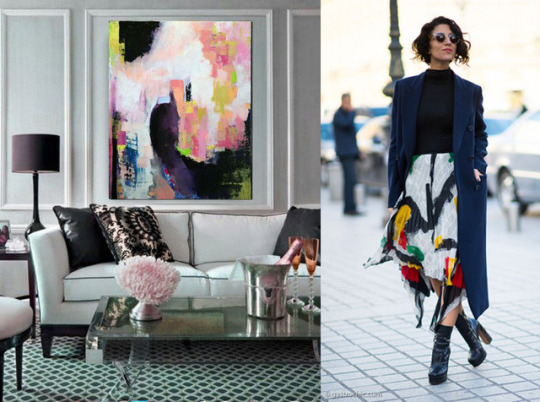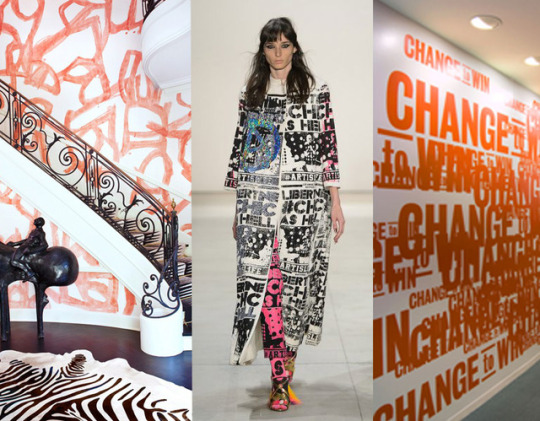#DesignInfluence
Text
#CentralSaintMartins#CSM#FashionEducation#CreativeExcellence#ArtAndDesign#FashionInnovation#FashionDesign#FashionFuture#LondonFashion#GlobalCreativity#CreativeHub#FashionIndustry#CreativeJourney#FashionInspiration#DesignInfluence#FashionMentorship#FashionLeadership#ArtisticExploration#FashionCulture#DesignersAtCSM#CreativePotential#FashionPioneers#FashionLegacy#DesignInnovation#CreativeChallenge#FashionExperience#ArtisticVision#CreativeTransformation#FashionCommunity#DesignersOfTomorrow
1 note
·
View note
Photo


Art Influences every segment of creativity. Both abstract and graphic art can be beautifully integrated into fashion and space design.
#pn#pacificnorthern#art#designinfluence#designinspiration#interiordesign#spacedesign#fashion#SS17#retaildesign#hospitalitydesign#luxuryinteriors
1 note
·
View note
Photo

Tadashi Shoji -Pre Fall. 2020 New York A Japanese born designer living in USA is celebrating a colorful encounter with Asian culture and artisanal traditions surrounded by the splendor of Oriental interiors.... it is really the millennium of Asia! Selection of magic apparel and charming interiors As introduced last year : "About “products” it means not only fashion designers to design furnishing and to design objects but also designers and architects concepts to influence fashion collections and further design environment to inspire apparel collections architecture ,patterns and printing." See more on https://lnkd.in/gvhgAUd Images courtesy of Tadashi Shoji #TadashiShoji #PreFall20 #fashion #fashionInsights #Asia #AsianCulture #interiors #design #designInfluences #trends #colorful https://www.instagram.com/p/B5zlD8CgIW59a-Dj3xaZ5mph1jTP-3ICFkwHUw0/?igshid=11je8la26s0gl
#tadashishoji#prefall20#fashion#fashioninsights#asia#asianculture#interiors#design#designinfluences#trends#colorful
0 notes
Photo

D&T 8 : the influence and impact of design
Nicholas Oddy, Head of Department of Design History and Theory at GSA, spoke to us about some great design icons and their background.
In conducting a whistle-stop tour of some iconic pieces of design from the last few centuries, Oddy provided interesting insights regarding everything from how the design came about to what future designs it inspired. The Forth Rail Bridge, the Model T Forde, the British road signs, for example, are all familiar, but his encyclopaedic knowledge of their context showed them in a new light.
Oddy highlighted that design is a reaction, it has a motive, and it causes effects. I’ll look at some examples of this here.
The Forth Rail Bridge (1882) subscribes to a modernist design discourse as its beauty is established through engineering, not decoration. However in reality it is perhaps over-engineered, it was created as a symbol of strength to restore confidence in British civil engineering in the wake of the Tay Bridge disaster a few years earlier. So the cantilever bridge we know today, and is plastered all over our bank notes and post cards, could have looked very different if it weren’t for the social motives behind the design.
With the Model T Ford (1910), it is perhaps the thought behind the design, the belief system and manufacturing progress which makes it so great. Ford had the philanthropic paternalistic capitalist belief that goods should be available for all, so he strived for more automation in production, reducing the assembly to repetitive basic manual tasks which meant he could hire untrained staff and ultimately cut the cost of the car so much that any employee could eventually afford one for themselves.
This system of automation snowballed, creating the consumerist culture born in America in the twentieth century. This in turn began to encourage more dishonesty in design, such as Henry Dreyfuss streamlined fridge (1938) which was visually compelling and desirable but in reality was merely a fancy shell containing no superior technology underneath. Similarly, Raymond Loewy’s Coldspot refrigerator (1934) which Sears released refinements of annually with only exterior differences, motivating sales with stylistic obsolescence. These appliances may be hailed as ‘great design icons’ and rarely questioned, but when we dig a little deeper we can see that they’re serving the industry but not the consumer. In cases like this, we need to personally decide what, or whom, we believe must be prioritised in ‘great design’.
In the early 1960s, the British government sponsored many design initiatives including rehashing the road signage system across the country. Jock Kinneir and Margaret Calvert would undertake this, the “biggest graphic design job in history”. For the first time, the communication of road signage was deeply considered, resulting in a balanced and uniform system. Calvert tried to keep the figures timeless, without hints of the fashion of the times. An interesting decision she made which could be considered as an act of subliminal feminism was to make the girl bigger, and leading, in the sign shown above (1963). Kinneir and Calvert, he said, created “a house style for Britain”. “On a project of that scale, you have to get it absolutely right.” The fact it has lasted so long is testament to how right they got it.
As these brief examples demonstrate, any piece of design is a comment on the society of the time, and will have ripple effects throughout that society. Design is fascinating because it is richly contextualised and constantly changing, forcing us to continually reassess our understanding of it. This talk was a lesson in remembering that, and in constantly questioning our definitions of great design and having an opinion, never becoming complacent.
2 notes
·
View notes